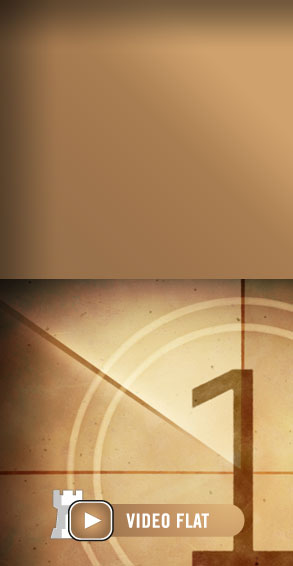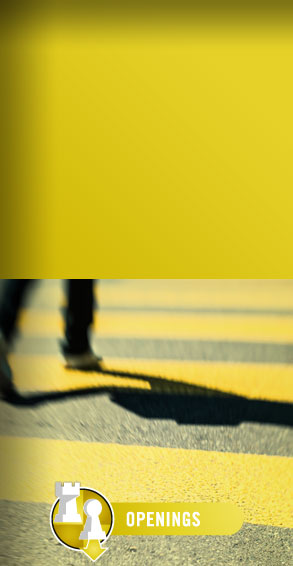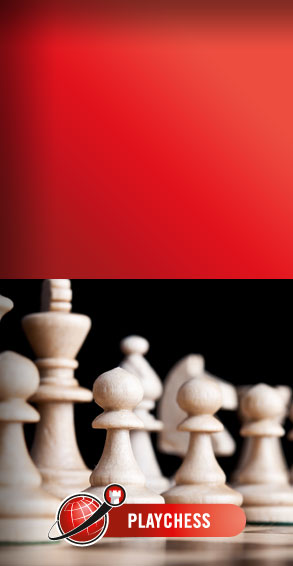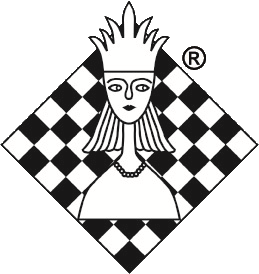PART III – What does the future hold for grandmasters against computers?
In Part I
and Part II
of this series, we looked at some historical evidence suggesting that right
now the top human grandmasters and the top chess computers are extremely closely-matched.
Further, there is no compelling evidence to indicate that computers are soon
going to pull ahead of the top humans.
With the Kasparov-Deep Blue matches so far in the past, it must come as a
big surprise to many people that computers have not yet surpassed the top grandmasters.
Although computers are obviously getting stronger due to hardware and software
improvements, humans have also improved their play against computers, faster
than expected.
What does the future hold for grandmasters against computers? It all depends
upon which group can improve faster, relative to the other. "Improvement"
would typically suggest that a player is adding something positive to their
play. However, remember that it could also mean that a player is removing something
negative from their play. Either one constitutes "improvement".
I can think of three main categories where grandmasters and/or computers could
improve:
- Physical strength
- Chess expertise
- Playing style against specific opposition
Let's go through those three categories and see how they apply to computer
improvement against humans, as well as human improvement against computers.
1. Physical strength
Clearly, improving the hardware will allow a chess computer program to play
objectively stronger. Faster-executing programs can evaluate deeper, or more
accurately, in the same amount of "thinking" time. From examining
the past several years of the SSDF (Swedish Computer Chess Association) computer
list, we can say that hardware leaps of 80 points have happened approximately
every two years. This would suggest that computer hardware is providing an
annual increase of 40 points of strength.
However, it is important to remember chess columnist Mig Greengard's quote:
"The computer doesn't really play chess. It plays another game that looks
like chess but has its own rules." When two computers are playing each
other, if one can search 17 moves deep and the other can only search 15-16
moves deep, then the first computer has a big advantage because it sees everything
the second computer sees, and then some. That's why it is conceivable that
computers are gaining 40 points a year against older computers, from searching
depth alone. Against humans, however, a search 17 moves deep vs. a search 15
moves deep is not as relevant, because the human isn't thinking nearly so far
ahead anyway.
Of course, it is difficult for humans to improve their physical strength when
playing computers. However, there is still a very effective way to "improve"
their success, and that is to remove a negative factor which has hindered grandmasters'
performance: the lengthy match. You can see here that computers do progressively
better against humans, as a one-on-one match progresses:
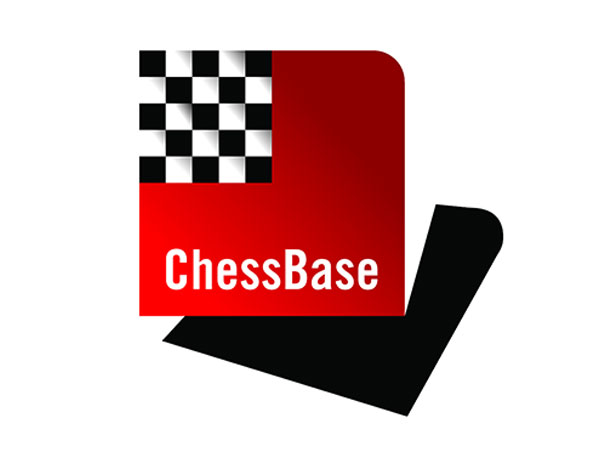
This is likely due to the effect of physical and mental fatigue upon the human,
as the match continues. In a match between two humans, the fatigue would mostly
balance out as the match progressed, since both humans would get tired. But
obviously the computer does not get tired or discouraged. It is also possible
that this effect is related to humans using up their opening novelties at the
start of a match, or some other factor, but fatigue seems likely to be the
real culprit.
I should also point out that you don't see this effect in Swiss or round-robin
tournaments that have both computer and human participants. Computers do about
the same against humans, whether in the start, middle, or end of a tournament,
so there seems to be something particularly draining for the humans about a
one-on-one match against a computer.
2. Chess expertise
Certainly, upgraded software will play objectively stronger chess, even on
the same hardware. Improved chess knowledge, better opening books, better endgame
tablebases, better search techniques, and better utilization of hardware will
all enable superior moves to be found in the same amount of thinking time.
How can we express this in terms of rating points? Well, in Part
I we looked at how the SSDF ratings of the top-ranked computers have progressed
over time. Let's review that graph once again:

However, remember that this only applies to games between computers. In the
same way that hardware upgrades probably don't give the full 40-point annual
improvement against humans, it seems likely that software upgrades also don't
provide an additional 30-point annual improvement against humans. Surely some
of those 30 points of software upgrades will come from improvements to a program's
opening library. Since the older programs are commercially available, it is
fairly straightforward to play thousands of games against older software and
to identify holes in the opening books of those older programs. This will allow
new software to dominate older software, but against humans, the improvements
to the opening book (while useful) probably won't translate to a full 30-point
annual improvement.
With a 40-point annual improvement due to hardware upgrades, and a 30-point
annual improvement due to software upgrades, that would normally suggest that
computers are getting stronger at a rate of 70 Elo points a year, relative
to humans. This is clearly not happening. If the SSDF list is indeed over-estimating
the true rate of improvement of computer programs, what would we expect to
see? Over time, the ratings of the top programs would drift higher and higher,
until they got so ridiculously high that some sort of correction would need
to be applied to reflect the true strength of the computer programs.
This is exactly what happened a few years ago, and that explains the curious
downturn of the SSDF graph in mid-2000. This is what Thoralf Karlsson, SSDF
chairman, had to say in August 2000:
The SSDF rating list provides information about the relative strength
of chess programs, when tested in the way SSDF does, but does not necessarily
say which Elo-rating a certain program would achieve after having played hundreds
of tournament games against human players. How good or bad the individual correlation
between SSDF- and ELO-ratings is, will most likely never be established. So
many games against humans will never be played.
Apart from establishing relative ratings, we have had the ambition that
the general level of the list would be fairly realistic, compared to human
ratings. From our start in 1984 we have used tournament games against Swedish
chess players to calibrate the list. At some points we have discarded older
games, believing that human chess players with time have become better to exploit
the weaknesses of chess programs. Until the latest rating list the level of
the list has been unchanged from summer 1991, and was based on 337 tournament
games against Swedish players between 1987 and 1991. Regrettably it has not
been possible for us to play any more games for many years now.
For some time we had the general impression that the level of the list was
rather OK. But during the latest years it has become more and more obvious
that the best programs on the latest hardware don't get as high Elo-ratings
as our list could be interpreted to predict. If this is due to differences
between Swedish- and Elo-ratings, to the "human learning effect",
to some kind of "spreading effect" in a computer-computer list or
a combination of these and perhaps other factors, we don't know.
It is difficult to find a perfect solution, but we have chosen to correlate
the level of the list to the results of tournament games between computers
and Elo-rated humans, played during the latest years. For us it has been very
convenient to use Chris Carson's compilation of such games. Calculations based
on these games indicate that the level of the list is about 100 points too
high. So from now on we have lowered the list with 100 points!
To summarize, before the correction, in early 2000, the SSDF ratings were
still accurate in how they ranked computers against each other, but the actual
rating numbers were too high, across the board. Those numbers ultimately were
coming from a few hundred games played against Swedish players in 1987-1991.
And it was becoming too much of a stretch to extrapolate forward from games
played by the top Mephisto and Fidelity computers, on 68020 processors against
lower-rated humans, a dozen years in the past. For one thing, there was no
allowance for the fact that human players had gotten objectively stronger,
or had learned to play better against computers, since 1991.
So, at that point, about 100 games were analyzed from events between humans
and computers in 1997-2000. The humans in those games had an average FIDE rating
below 2400; the only two events against really strong humans were Junior at
Dortmund 2000, and Fritz at the Dutch Championships in 2000. Thoralf Karlsson
also had to make some assumptions about the impact of different hardware, since
the hardware used by Junior and Fritz in those events (for example) was different
from that used by the SSDF. The conclusion from all of this analysis was that
all SSDF ratings should be reduced by 100 points. There have been no further
corrections since then.
However, I believe that the same kind of upward drift has continued in the
three-plus years since August 2000. It is true that today's top computers would
dominate the top computers from three years ago, leading to a 200-point difference
on the SSDF list. However, I don't see that it necessarily means that today's
top computers would play 200 points better against top grandmasters.
For one thing, computers were doing unusually well against humans, exactly
in that time frame. If you remember the performance rating graph from Part
II a couple weeks ago, top computers had a performance rating (against
humans) of 2444 between 1995 and 1997, and then it shot up 200 points (to 2647)
between 1998 and 2000. But the improvement didn't continue at that rate; the
performance rating of computers against humans only went up by a total of 62
points between the 1998-2000 range and the 2001-2003 range. And as I tried
to prove in Part II, even that improvement only came from computers becoming
more dominant against the lower-rated humans; humans rated 2550+ are just as
successful against computers today as they were five years ago.
Since the SSDF list is calibrated against human-computer results from 1997-2000,
and more than 80% of those humans were rated below 2550 anyway, I think it
is a mistake to look at the 2800+ SSDF ratings of the top programs and to conclude
that those top programs will dominate today's top grandmasters. The battle
is not over yet.
In Part IV Jeff Sonas examines playing style and the question of whether
it is possible to "tune" computers to play especially well against
humans. He includes statistical analysis on which openings are especially suited
to the playing style of computers, i.e. which lines humans should probably
avoid. This article will appear this weekend – well, you're just going
to have to wait like everyone else, aren't you, Garry...
 |
Jeff Sonas is a statistical chess analyst who has
has invented a new rating system and used it to generate 150 years of
historical chess ratings for thousands of players. You can explore these
ratings on his Chessmetrics
website. Jeff is also Chief Architect for Ninaza, providing web-based
medical software for clinical trials.
Previous articles:
|














